 W
WHomer Martin Adkins was a pharmacist, businessman, and Democratic politician who served as the 32nd governor of the U.S. state of Arkansas. Adkins is remembered as a skilled retail politician and a strong states' rights proponent and social conservative who served as governor during a period when Arkansas departed from several national economic and societal trends. The Adkins administration fought federal influence in Arkansas during the post-New Deal era; successfully courting federal wartime production investment during World War II while battling the federal resettlement of Japanese-Americans in the state and Supreme Court civil rights decisions.
 W
WTheodore Gilmore Bilbo was an American politician who twice served as governor of Mississippi and later was elected a U.S. Senator (1935–47). A lifelong Democrat, he was a filibusterer whose name was synonymous with white supremacy—like many Southern Democrats of his era, Bilbo believed that black people were inferior; he defended segregation, and was a member of the Ku Klux Klan.
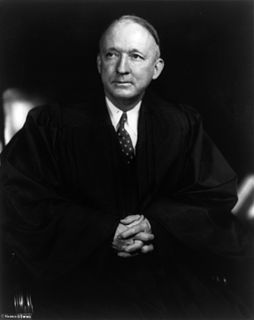 W
WHugo Lafayette Black was an American lawyer, politician, and jurist who served as a U.S. Senator from 1927 to 1937 and as an Associate Justice of the Supreme Court of the United States from 1937 to 1971. A member of the Democratic Party and a devoted New Dealer, Black endorsed Franklin D. Roosevelt in both the 1932 and 1936 presidential elections. Having gained a reputation in the Senate as a reformer, Black was nominated to the Supreme Court by President Roosevelt and confirmed by the Senate by a vote of 63 to 16. He was the first of nine Roosevelt nominees to the Court, and he outlasted all except for William O. Douglas.
 W
WJohn Gutzon de la Mothe Borglum was an American sculptor most widely known for the colossal sculpture Mount Rushmore National Memorial. He was also associated with various other public works of art, including Stone Mountain in Georgia, the statue of Union General Phillip Sheridan in Washington, D.C., as well as a bust of Abraham Lincoln which was exhibited in the White House by Theodore Roosevelt and which is now held in the United States Capitol crypt in Washington, D.C.
 W
WWyatt Tate Brady was an American merchant, politician, Ku Klux Klan member, and a "founder" of Tulsa, Oklahoma.
 W
WJonathan David Brown was an American record producer and audio engineer known for his work on albums released in the Contemporary Christian music industry. Brown served federal prison time as an accessory after the fact for helping a member of the Tennessee White Knights of the Ku Klux Klan evade authorities.
 W
WRobert Carlyle Byrd was an American politician who served as a United States Senator from West Virginia for over 51 years, from 1959 until his death in 2010. A member of the Democratic Party, Byrd also served as a U.S. Representative for six years, from 1953 until 1959. He remains the longest-serving U.S. Senator in history; he was the longest-serving member in the history of the United States Congress until surpassed by Representative John Dingell of Michigan; he was the last remaining member of the U.S. Senate to have served during the presidency of Dwight Eisenhower; and he was the last remaining member of Congress to have served during the presidency of Harry S. Truman. Byrd is also the only West Virginian to have served in both chambers of the state legislature and both chambers of Congress.
 W
WEdward Young Clarke was the Imperial Wizard pro tempore of the Ku Klux Klan from 1915 to 1922. Prior to his Klan activities, Clarke headed the Atlanta-based Southern Publicity Association. He later served as the president of Monarch Publishing, a book publishing company.
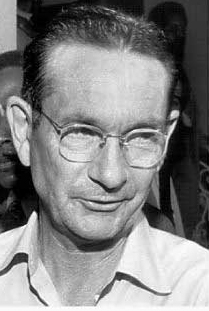 W
WByron De La Beckwith Jr. was an American white supremacist and Klansman from Greenwood, Mississippi, who assassinated the civil rights leader Medgar Evers on June 12, 1963. Two trials in 1964 on that charge, with all-white juries, resulted in hung juries. In 1994, he was tried by the state in a new trial based on new evidence and was convicted of the murder and sentenced to life in prison.
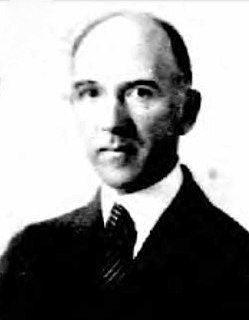 W
WFrederic "Freddie" Stanley Dunn was an American scholar of classical studies on the faculty of the University of Oregon (UO), and a Ku Klux Klan leader.
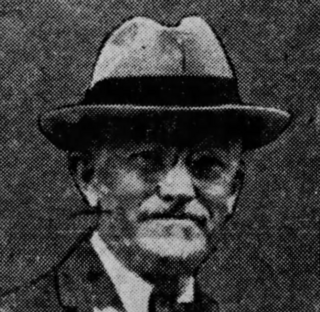 W
WFrank Eugene Farnsworth (1868-1926) was an American political organizer who was best known for being King Kleagle of the Ku Klux Klan in Maine. Based in Portland, Maine, Farnsworth recruited thousands of men and women to the Ku Klux Klan during the group's peak from 1923-1924.
 W
WEdward Reed Fields is an American white supremacist and anti-Semitic political activist.
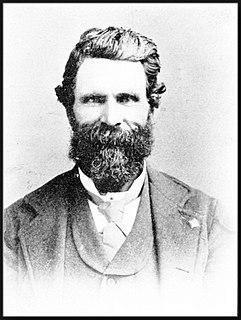 W
WLamar Fontaine was an American military officer, spy, surveyor, poet and author. He served in the Mexican–American War and the American Civil War, and he was a member of the Ku Klux Klan. He drew maps of Israel, Japan and China. He authored poetry and a memoir.
 W
WJoseph Paul Franklin was an American white supremacist and serial killer who engaged in a murder spree spanning the late 1970s and early 1980s.
 W
WJohn Brown Gordon was an attorney, a slaveholding plantation owner, general in the Confederate States Army, and politician in the postwar years. By the end of the Civil War, he had become "one of Robert E. Lee's most trusted generals."
 W
WDavid Bibb Graves was an American Democratic politician and the 38th Governor of Alabama 1927–1931 and 1935–1939, the first Alabama governor to serve two four-year terms.
 W
WThe lynching of Michael Donald in Mobile, Alabama on March 21, 1981, was one of the last reported lynchings in the United States. Several Ku Klux Klan (KKK) members beat and killed Michael Donald, a 19-year-old African-American, and hung his body from a tree. One perpetrator, Henry Hays, was executed by electric chair in 1997, while another, James Knowles, was sentenced to life in prison after pleading guilty and testifying against Hays. A third man was convicted as an accomplice, and a fourth was indicted but died before his trial could be completed.
 W
WRufus Cecil Holman was an American politician and businessman in the state of Oregon. A conservative Republican and native Oregonian, he served as United States Senator for a single term during World War II. He previously had been the state treasurer and served on the Multnomah County Board of Commissioners.
 W
WEdward L. Jackson was an American attorney, judge and politician, elected the 32nd Governor of the U.S. state of Indiana from January 12, 1925, to January 14, 1929. He had also been elected as Secretary of State of Indiana.
 W
WKaspar K. "Kap" Kubli, Jr. was an American politician in the state of Oregon. Closely associated with the Ku Klux Klan, Kubli, A member of the Republican party, was elected Speaker of the Oregon House of Representatives in 1923. Among Kubli's legislative achievements during five terms of office was authorship and passage of the Oregon Criminal Syndicalism Act in 1919.
 W
WEdgar Ray Killen was an American white supremacist and convicted criminal. A Ku Klux Klan organizer, he planned and directed the murders of James Chaney, Andrew Goodman, and Michael Schwerner, three civil rights activists participating in the Freedom Summer of 1964. He was found guilty in state court of three counts of manslaughter on June 21, 2005, the forty-first anniversary of the crime, and sentenced to 60 years in prison. He appealed the verdict, but the sentence was upheld on April 12, 2007, by the Supreme Court of Mississippi. He died in prison on January 11, 2018, six days before his 93rd birthday.
 W
WDavid Eden Lane was an American white separatist and convicted felon. A member of the domestic terror group The Order, he was convicted and sentenced to 190 years in prison for racketeering; conspiracy; and being an accomplice to the murder of Alan Berg, a Jewish radio talk show host, who was murdered by another member of the group on June 18, 1984. He died while incarcerated in the Federal Correctional Complex in Terre Haute, Indiana.
 W
WRice William Means was an American war hero who became a Ku Klux Klan leader and a Republican United States Senator from Colorado.
 W
WClarence Joseph Morley was the 24th Governor of Colorado from 1925 to 1927, serving one two-year term. He was a Republican. Before becoming governor he was a judge in Denver, Colorado. He was a member of the Ku Klux Klan which was an important force in Colorado politics during the 1920s and largely responsible for the division of the Republican and Democratic votes that enabled him to take office.
 W
WJohn Watson Morton was an American Confederate veteran, farmer and politician. He served as captain of artillery under General Nathan Bedford Forrest in the Confederate States Army during the American Civil War, and he was the founder of the Nashville chapter of the Ku Klux Klan after the war. He served as the Tennessee Secretary of State from 1901 to 1909.
 W
WCecil Ray Price committed the murders of Chaney, Goodman, and Schwerner in 1964. At the time of the murders, he was 26 years old and a deputy sheriff in Neshoba County, Mississippi. He was a member of the White Knights of the Ku Klux Klan.
 W
WLawrence Andrew Rainey was a native Mississippian who was elected Sheriff of Neshoba County, Mississippi during the 1960s. He gained notoriety for allegedly being involved in the June 1964 murders of Chaney, Goodman, and Schwerner. Rainey was a member of Mississippi's White Knights of the Ku Klux Klan
 W
WAlton Wayne Roberts was a Klansman convicted of depriving slain activists Michael Schwerner, Andrew Goodman and James Chaney of their civil rights in 1964. He shot two of the three civil rights workers before his accomplices buried their bodies in a dam.
 W
WWilliam Laurence Saunders (1835-1891) was an American attorney, newspaper editor, historian, Ku Klux Klan chief organizer in North Carolina, and the North Carolina Secretary of State from 1879 until his death in 1891.
 W
WRobert Glenn Shaver was an American lawyer, militia leader, and colonel in the Confederate States Army during the American Civil War. He served in several key battles in the Western Theater. After the war, he was an early leader of the Ku Klux Klan in Arkansas. Later in life, he became a significant leader in Confederate veterans' reunions and served for a time as the Major General in Command of the Arkansas State Guard.
 W
WWilliam Stewart Simkins was a Confederate soldier and professor of law at the University of Texas at Austin. While a Citadel cadet, he quite possibly fired the first shot of the American Civil War.
 W
WJimmie Snowden, of Lauderdale County, Mississippi, was a conspirator and participant in the notorious murders of Chaney, Goodman, and Schwerner in Philadelphia, Mississippi in 1964. He was a member of the White Knights of the Ku Klux Klan and was sentenced in 1967 by federal district judge William Cox to three years for his role in the crime. Jimmy Snowden had lived in Hickory, Mississippi. While reporting about the death of fellow trial defendant Olen Burrage on March 18, 2013, however, New York Times journalist Douglas Martin claimed that James T. Harris was the only surviving defendant who was tried for the murders, thus implying that Snowden had died by this point in time.
 W
WBenjamin Franklin Stapleton was the mayor of Denver, Colorado, for two periods, the first from 1923 to 1931 and the second from 1935 to 1947. He also served as a member of the Ku Klux Klan and as the Democratic Colorado State Auditor from 1933 to 1935.
 W
WTheodore Lothrop Stoddard was an American white supremacist and nazist historian, journalist, and political scientist.
 W
WJesse Benjamin Stoner Jr. was an American neo-nazi, segregationist politician, and a domestic terrorist who was convicted in 1980 of the 1958 bombing of the Bethel Baptist Church in Birmingham, Alabama.
 W
WThomas Jefferson Terral was the 27th Governor of Arkansas.
 W
WIra Bowman Thompson was a politician, Ku Klux Klan leader, and attorney from the U.S. state of Alabama.
 W
WMarcus B. Toney was an American Confederate veteran, Klansman and Masonic leader who worked for the Tennessee Central Railroad. He was the author of The Privations of a Private, a memoir about his service in the Confederate States Army. He was the founding president of the Home for Aged Masons.
 W
WMary Elizabeth "Bessie" Tyler was an Atlanta public-relations professional who, along with Edward Young Clarke, founded the Southern Publicity Association. Their organization helped to turn the initially anemic second Ku Klux Klan into a mass-membership organization with a broader social agenda. They also worked with the Anti-Saloon League during the same period.
 W
WWilliam David Upshaw served eight years in Congress (1919–1927), where he was such a strong proponent of the temperance movement that he became known as the "driest of the drys."
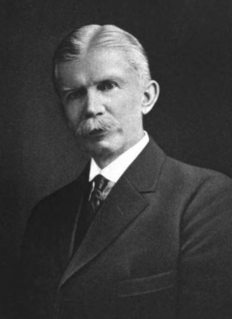 W
WThe Venable Brothers was a business venture formed by brothers William Hoyt Venable (1852–1905) and Samuel Hoyt Venable (1856–1939) in DeKalb County, Georgia. The brothers owned rock quarries. Sam Venable was involved in the resurgence of the Ku Klux Klan and in the creation of the Confederate memorial on Stone Mountain, Georgia. He owned Stone Mountain, where a cross burning was held in 1915, and granted the Klan an easement to the mountain in 1923. The Venable brothers granted a 12-year lease to Stone Mountain for the carving of the Confederate memorial carving started by Gutzon Borglum.
 W
WClifford Mitchell Walker was an American attorney and politician from Georgia.
 W
WEdward Douglass White Jr. was an American politician and jurist from Louisiana. He was a United States Senator and the ninth Chief Justice of the United States. He served on the Supreme Court of the United States from 1894 to 1921. He is best known for formulating the Rule of Reason standard of antitrust law.